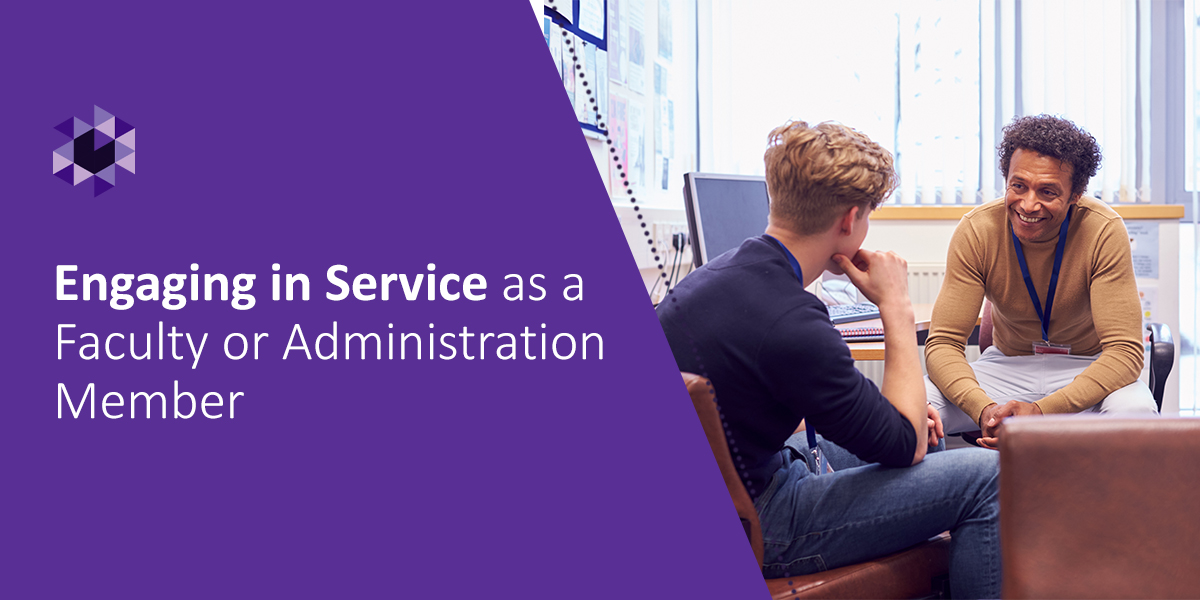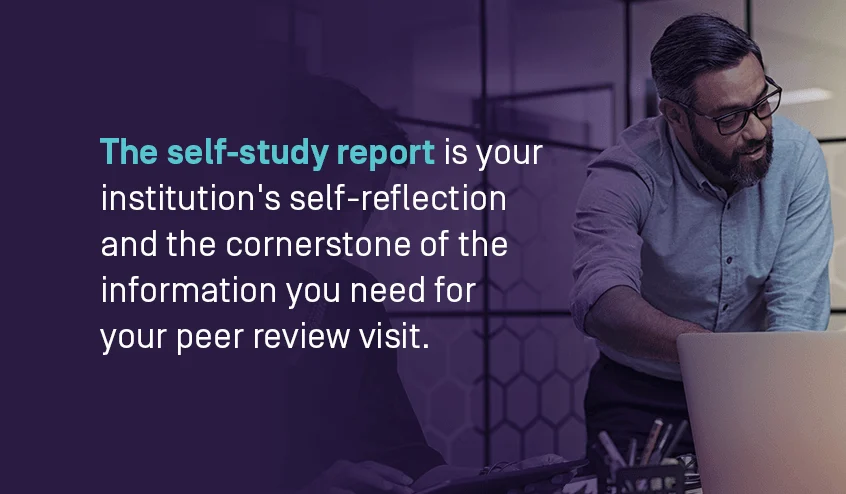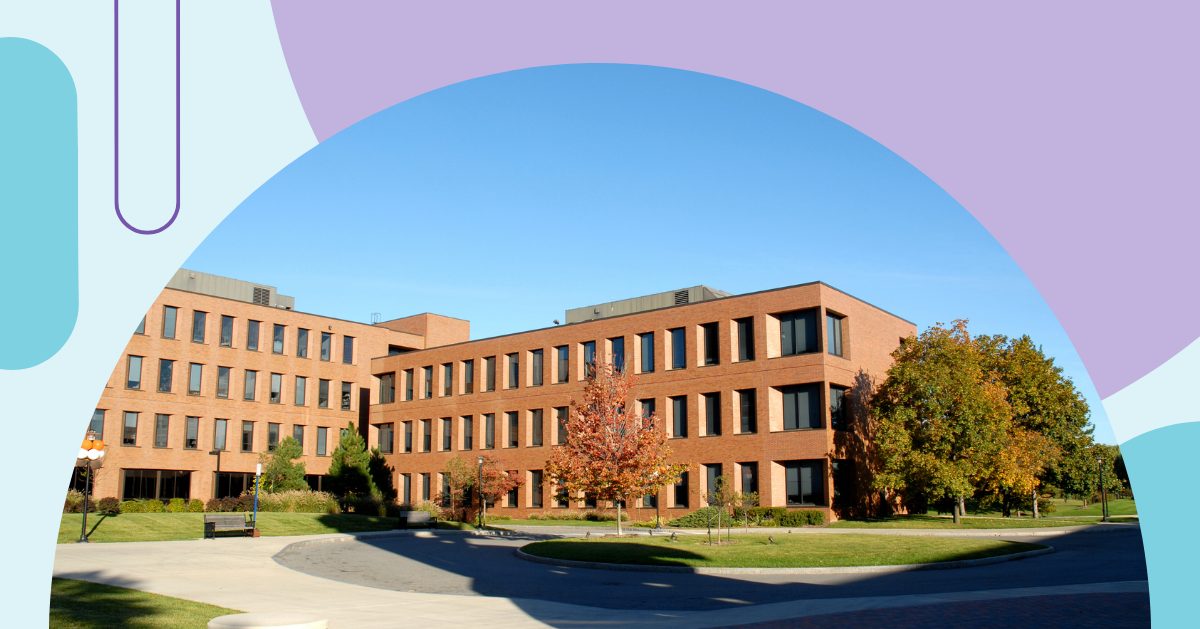
The soaring cost of higher education presents challenges for students and institutions. For students, these higher costs often result in lower interest in pursuing academic credentials. On the other hand, many institutions have tighter budgets and fewer state funding opportunities. The result? Community colleges are left grappling with how to attract and retain students to bolster revenue streams.
Unfortunately, some institutions are facing a perpetual downward spiral by attempting to balance budgets by reducing spending. This strategy often results in reduced staff, fewer class offerings, and abandoned programs, causing enrollment to drop even further and leaving institutions with fewer resources over time.
The answer to combating these challenges isn’t reducing costs but improving community college enrollment. More students bring more income to higher education institutions, which translates to increased resources for programs, classes, and other educational opportunities. However, reaching more potential students and offering meaningful opportunities to convince them to return to campus is a challenge of its own.
Why community college enrollment matters
Enrollment is crucial for higher education institutions. This metric often reflects an institution’s desirability, ranking, and reputation, which impacts other crucial elements, including funding and program building. Community college enrollment has financial implications, and a strong enrollment yield aids in creating a more vibrant, diverse, and engaged campus.
Community colleges face several challenges in this sphere. Funding for community colleges has been historically lower than four-year institution funding. This factor alone depicts a problem because community colleges often rely on expensive and specialized equipment to support robust training programs. Without adequate monetary support from governments, community colleges must rely on other revenue sources, including student enrollment.
What’s up with the student enrollment decline?
The decline of community college enrollment is a complex topic. Some demographic factors contribute to the enrollment cliff, but there are also several economic forces that impact student numbers and college responses. Some of the most significant challenges include:
- Costs: Studies report that cost remains the largest barrier to education access for students, but raising tuition costs is only part of the battle. While tuition accounts for a large chunk of higher education student spending, other factors like transportation and housing are also a consideration. On top of these rising costs, students are battling increasing grocery costs, which can lead to food insecurity that perpetuates the vicious cycle of students feeling the need to choose between education and other aspects of life.
- Schedules: Time is another contributor to declining enrollment. Many students have extensive commitments outside of education, such as working full-time or caring for a loved one. Recent numbers suggest that between 70 percent and 80 percent of undergraduates work at least part-time. Those already working jobs to care for themselves or family members before enrolling in community college may have a harder time fitting higher education into an already busy schedule.
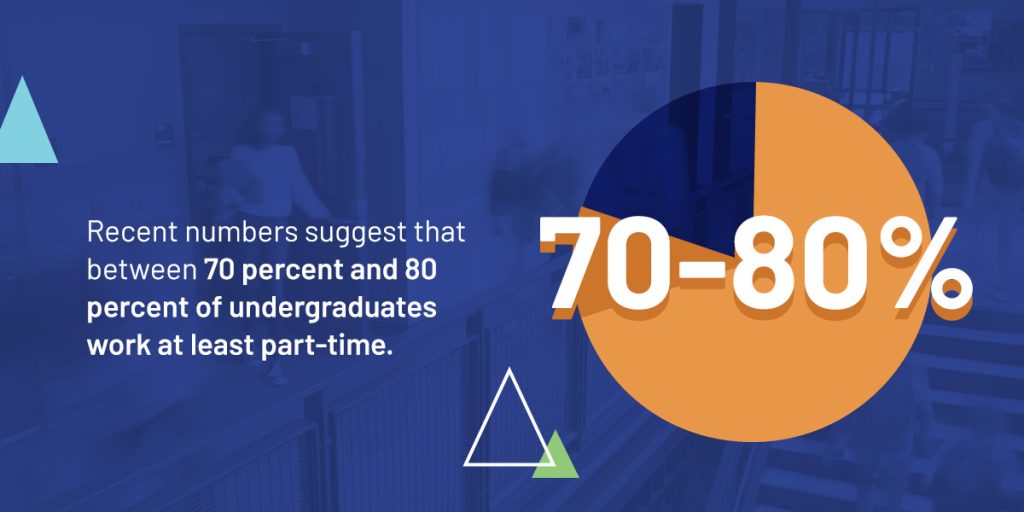
- Hesitancy: Perception is another significant battle for students and institutions. More people are debating whether a degree is worth the time and money necessary to earn it. In 2022, only 62 percent of high school students headed straight to college after graduation, and only one in four Americans believe a degree is important for obtaining a job.
- Birth rates: Moving into 2025, the United States continues to face historic lows in fertility rates. With fewer children being born, there are fewer children making their way through school and into higher education. A smaller pool of potential students leads to lower enrollment.
How to improve enrollment in community colleges
Despite the gloomy outlook community colleges seem to face, there is hope for reigniting student passions and attracting students back to campus. Robust enrollment strategies for community college students look past the financial constraints and consider how to meet student needs and expand outreach.
Community colleges can boost enrollment by enhancing their online presence and using technology to personalize student experiences, while also offering flexible learning options and convenient enrollment processes. Strengthening community ties and providing robust student support, alongside data-driven program improvements, will further attract and retain a diverse student body.
Leveraging these community college recruiting ideas can help you grow your institution and strengthen your recruitment initiatives.
1. Improve your online presence

In our digital age, having an online presence is more than embracing a trend — it’s a need. Potential students often use social media, online posts, and personal research to guide their higher education application process. A strong online presence can depict your institution’s mission, highlight your credentials and program offerings, and encourage potential students to interact with your institution before making a decision.
Ensure you have a user-friendly website, create accounts on popular social media platforms, and utilize links to other social outlets. You can also consider leveraging partnership sites to increase your outreach and highlight your connections with industry leaders or local professionals.
2. Leverage technology solutions
Student success technologies have the power to guide your recruitment strategies and improve enrollment. These solutions can elevate the academic experience, simplify processes, centralize your student information, and help you prioritize prospect experiences. Leveraging student success technologies empowers you to access deep insights that guide you to understand your students, connect with them, and offer the support they need to thrive. These technologies can also highlight your commitment to early communication and constant growth to your current students, prospects, and faculty.
3. Provide convenient enrollment options
Convenient enrollment options could be the key to welcoming students to your campus.
Consider these strategies to make enrollment more convenient:
- Offer rolling enrollment: Open enrollment refers to an institution’s continuous review of applications. In many cases, prospects can expect admission decisions in four to six weeks. Rather than waiting for months to make a plan for the future, prospects can use their admissions decision to make changes as necessary to prepare for classes or training.
- Implement multiple start dates: Institutions relying on two or three specific application deadlines a year could be losing opportunities to attract students. Sometimes, a prospect’s circumstances change suddenly, empowering them to pursue education when they thought they couldn’t previously. However, if you have specific deadlines or stringent start requirements, a prospect may seek another institution or forgo efforts to access education entirely. Multiple start dates highlight your flexibility and may be more accommodating for a wider range of students.
- Waive application fees: Something as simple as waiving application fees can increase the number of prospects that apply to your institution. With cost being at the forefront of most minds, the idea of paying for multiple applications to various institutions can be enough to sway potential students from higher education. Some research has highlighted the benefits of waiving application fees, including increasing matriculation and inducing high-achieving prospects from low-income socioeconomic backgrounds.
- Consider online programs: Online courses have the potential to change the educational landscape. By allowing students to pursue education when it’s convenient and in the comfort of their own homes, higher education becomes more accessible. Some studies have also highlighted the benefits of online courses, such as increasing the likelihood of earning an associate’s degree and reducing the time it takes to graduate.
4. Create transfer pathways
More than 80 percent of community college students report they plan to transfer to four-year institutions. However, the transfer process can be challenging, often involving students taking additional classes or spending more money than they anticipated to make the switch and earn their degrees. With these additional barriers, many students leave empty-handed. Your institution can stand out by highlighting transfer pathways at the start of a student’s journey. Consider publishing transfer guides, building relationships with local four-year institutions, and sponsoring college fairs with other institutions to highlight your commitment to student progression.
5. Offer personalized student support
Community colleges meet a wide range of student needs, from delivering quality training for preparing students to enter the workforce to creating the foundation students need before moving to a four-year institution. With so many differing goals and starting points, it’s important to take unique approaches to each student. Personalization during the admissions process is vital for supporting your students and starting their academic journey on the right foot. Consider implementing a mentor program, advertising campus resources, and altering orientations to reflect each program you offer.
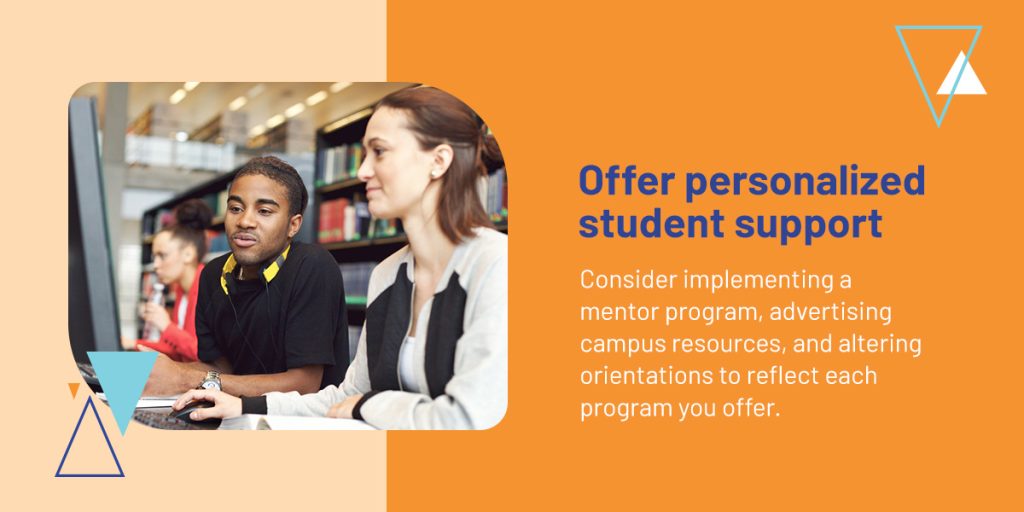
6. Engage with high schools
Another great way to boost enrollment is by interacting with prospective students as early as possible. High school’s junior and senior years are critical for many young learners. At this level, many students shape their opinions on higher education and browse their options. Connecting with local high schools is a great way to engage with these students early and shape positive perceptions. Consider these ways to connect with local schools:
- Offer courses to high school students for credit
- Dedicate support resources to high school students
- Align objectives with schools for combined community goals
- Host a program fair for students to browse offerings
- Create summer bridge or tutoring programs
7. Partner with local organizations
There are several opportunities for community colleges to connect with the community, including partnering with local employers and organizations. Local organizations can encourage higher education by offering incentives to employees for pursuing additional training or developing new skills.
Additionally, community colleges can help build a more skilled workforce by providing real-world examples and experienced-based learning opportunities. For example, a nursing program can partner with a local clinic to deliver work experience and potentially initiate an easier hiring process after program completion. Additionally, connecting with the community can increase your institution’s outreach, exposing more prospects to your institution.
8. Employ automated communication
Effective communication is crucial throughout the academic journey. Communication can keep students engaged and facilitate stronger and more meaningful connections. However, many traditional communication methods are less effective than they once were. For instance, emails and phone calls can be timely for prospects and your staff, making an inefficient process.
Alternatively, automated communication offers unique opportunities for answering questions quickly, ensuring all-time availability, and connecting with prospects in ways meaningful to them. You can implement communication strategies like automated text messages, mobile app reminders, and emails to engage students, provide essential information, and make the enrollment process more manageable for prospects. Virtual advisors and chatbots allow prospects to ask questions at any time of day and from any location, ensuring they can find answers quickly.
Regardless of the specific solutions you implement, these strategies can offer a more personalized experience and streamline enrollment-related processes. Additionally, you can use recorded answers to better understand your prospects and their needs. For example, you can use chatbot responses to craft frequently asked question pages, provide resource links to address concerns, or inform decision-making about your enrollment process.
9. Offer flexible learning options
With busy schedules and increasing non-academic responsibilities, many students need more flexibility from their higher education institutions. Your institution can accommodate student needs and make learning more accessible by offering flexible learning options. Providing online courses is a common way to enhance learning accessibility, but there are several other options as well.
For example, accelerated studies empower students to expedite certificate or program completion by opting for a condensed learning format. Alternative program completion pathways also offer unique ways to complete higher education. Internships, work experience, and ePortfolios offer personalized success pathways that highlight student understanding and align education with their life and career goals.
10. Promote inclusivity and diversity
Many institutions face challenges in attracting and retaining diverse populations, but diversity boosts student success, which can help your institution experience higher retention and craft more meaningful campus experiences.
Here’s how you can promote inclusivity and diversity:
- Provide resources, such as mentorship programs and scholarships to underrepresented groups
- Create student clubs and organizations that promote inclusion and diversity
- Include course materials that reflect diverse experiences and perspectives
- Educate your staff on the importance of inclusive workspaces and classrooms
- Understand the challenges of underrepresented groups in the academic landscape
11. Utilize data analytics
Insights drive decision-making and actions. Collecting data from prospective and current students can empower your institution to better understand student behaviors, performance metrics, and demographics. This information can guide your recruitment strategies by allowing you to identify which strategies are working and which need improvement. Data analytics tools allow you to identify patterns and assess pain points without bias. You can discover trends in application completion rates, dropout points, pre-application activities, and more to dedicate resources where your students and prospects need them most.
12. Reinvent your current programs
Reinventing your current programs with effective curriculum mapping can ensure your programs connect with occupations, empower students to learn more, and help you meet enrollment objectives. Students choose higher education institutions and programs that align with their goals and career ideas. Assessing and reinventing your programs can highlight your commitment to current and prospective students and strengthen your position as an academic institution. Implement software to understand how your courses connect to each other, measure learning in your current programs, and address obvious gaps to help students build their knowledge and support persistence.
Tips for increasing community college enrollment
As you implement your enrollment strategies, keep in mind that growth takes time. Regardless of the specific approach you take, there are several fundamental ideas to keep in mind. Successful recruitment strategies for community colleges encourage you to:
- Be adaptable: Your admissions processes and recruitment strategies should reflect and respond to market demands. You must redefine your objectives, adjust your strategies, and realign your initiatives as student needs change. Embracing new technologies, asking for feedback, and identifying improvement areas can guide your initiatives and bolster success.
- Know your students: Your enrollment strategies will only be effective if they are meaningful to your audience. Modern higher education students have unique needs, and the traditional student is no longer necessarily one who attends classes on campus Monday through Friday. Take time to get to know your students, understand their needs, and craft solutions that leave a lasting impact.
- Focus on retention: Getting students on campus should not be your only focus. Retention can be more profitable than enrollment and highlight your ability to meet student needs. Engage students throughout their educational journey and foster meaningful relationships and experiences that support their goals.
Bolster your student success strategies with Watermark














































































































